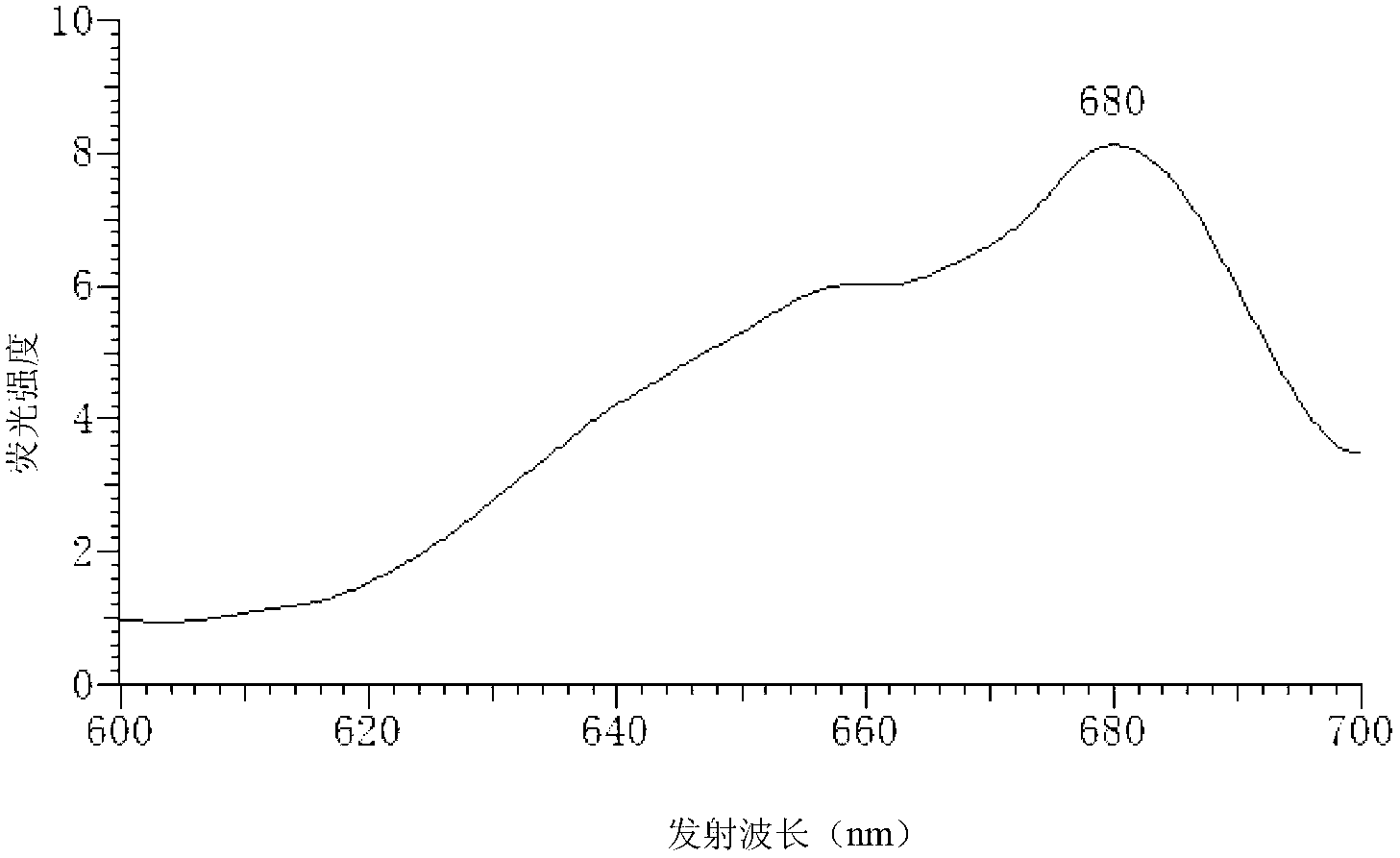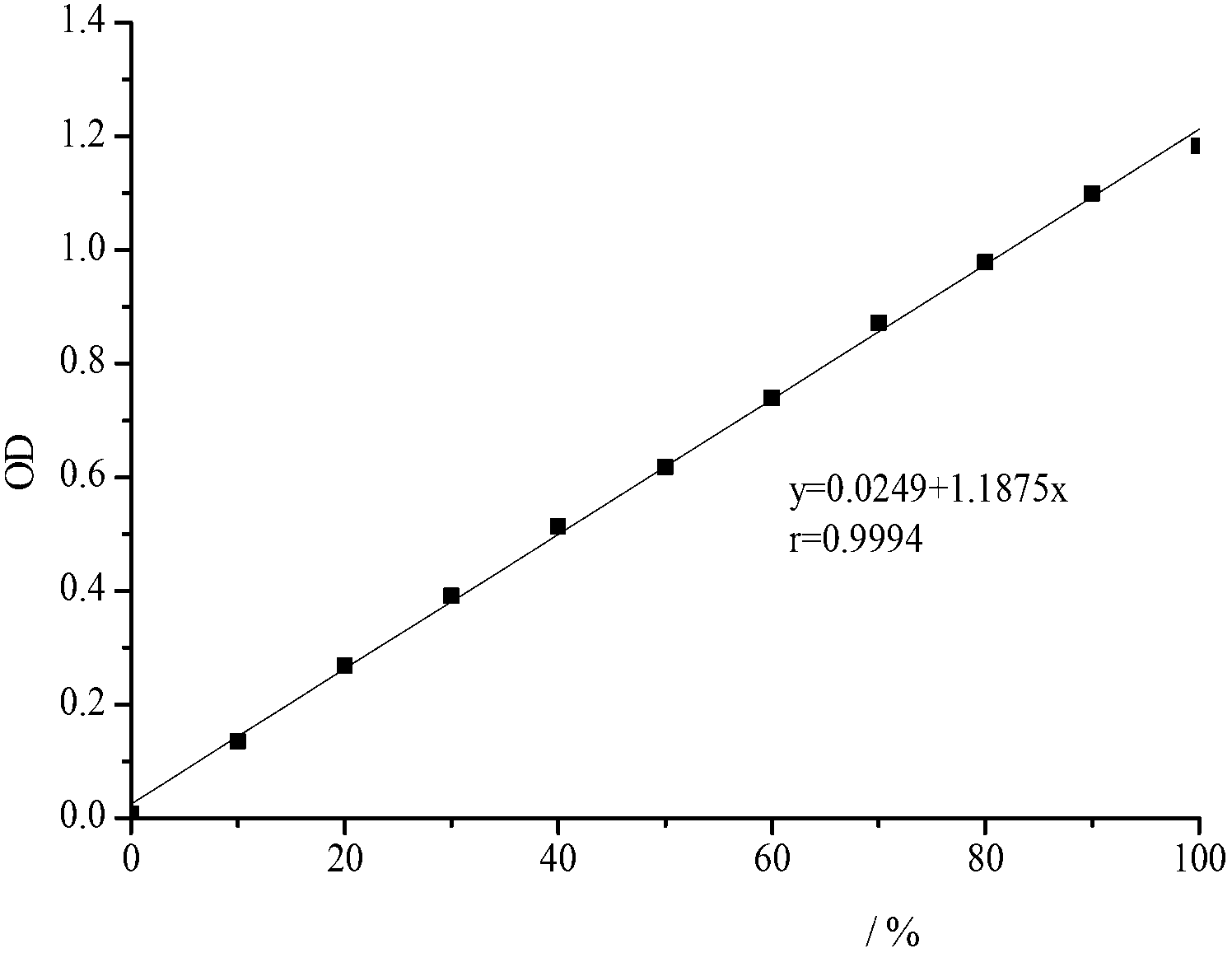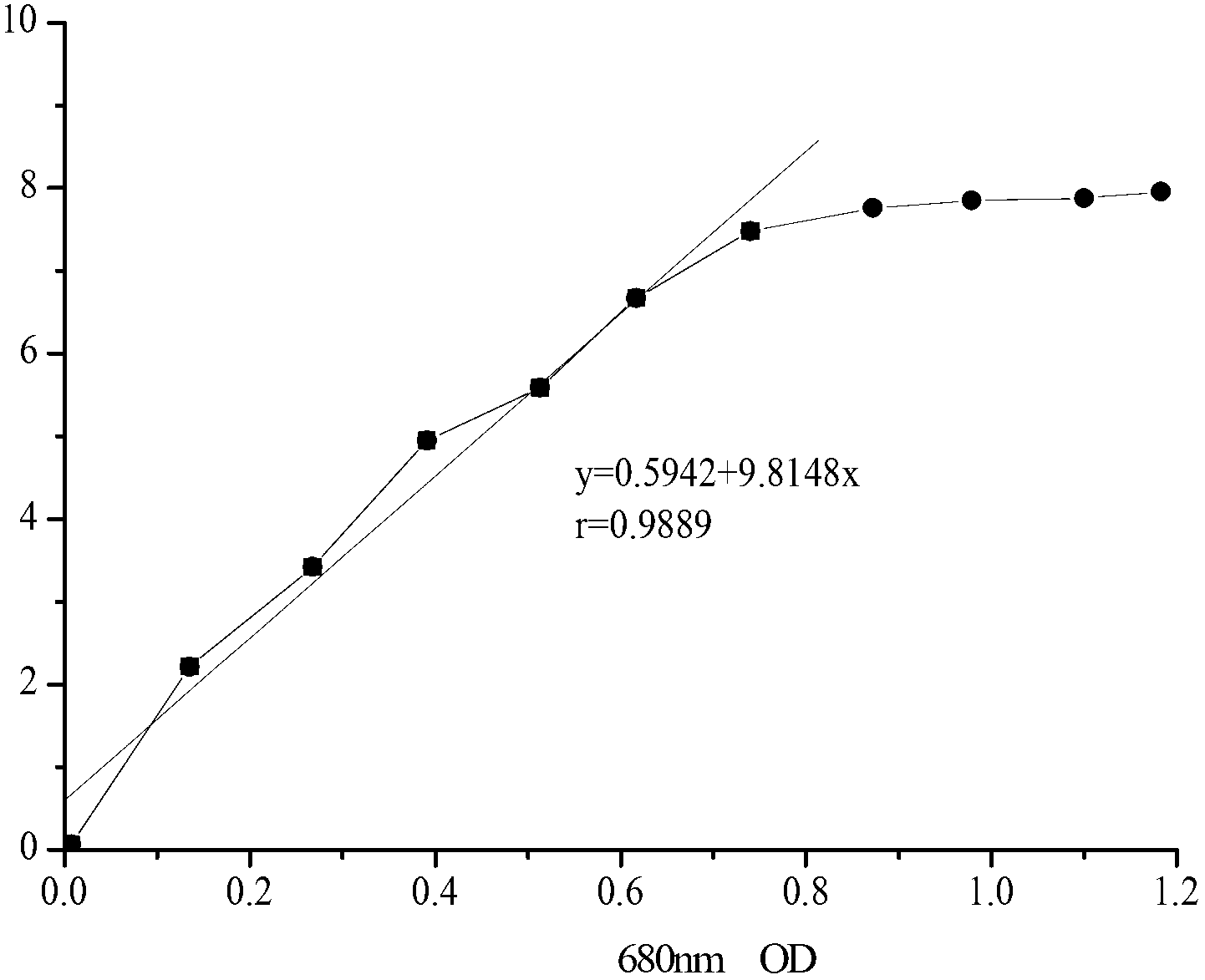Method for determining biotoxicity of atrazine by utilizing microcystis aeruginosa
A microcystis aeruginosa, biotoxic technology, applied in material excitation analysis, fluorescence/phosphorescence and other directions, can solve the problems of unstable luminescent bacteria and high method cost, and achieve the effects of low cost, convenient operation and broad application prospects.
- Summary
- Abstract
- Description
- Claims
- Application Information
AI Technical Summary
Problems solved by technology
Method used
Image
Examples
Embodiment 1
[0046] 1.1 Culture of Microcystis aeruginosa
[0047] Microcystis aeruginosa belongs to cyanobacteria, and BG-11 medium is used to prepare 100 mL of medium in proportion, and then the medium is put into a sterilizing pot and sterilized at 121 ℃ for 30 minutes. After taking it out, put it into the ultra-clean bench to cool, and inoculate the algae under aseptic conditions. After the inoculation was completed, the cells were cultured in a constant temperature light incubator. The culture conditions were: illuminance of 2000-2500 lux, temperature of 25±1°C, humidity of 75% RH, light-dark cycle of 12h:12h, and static culture. Shake the bottle 2-3 times a day, and change the position of the triangular bottle randomly each time to avoid uneven illumination. The algae grown to the logarithmic phase were transferred to the sterilized medium in proportion, and the transfer was repeated more than 3 times to achieve synchronous growth.
[0048] 1.2 Determination of chlorophyll fluores...
PUM
 Login to View More
Login to View More Abstract
Description
Claims
Application Information
 Login to View More
Login to View More - R&D
- Intellectual Property
- Life Sciences
- Materials
- Tech Scout
- Unparalleled Data Quality
- Higher Quality Content
- 60% Fewer Hallucinations
Browse by: Latest US Patents, China's latest patents, Technical Efficacy Thesaurus, Application Domain, Technology Topic, Popular Technical Reports.
© 2025 PatSnap. All rights reserved.Legal|Privacy policy|Modern Slavery Act Transparency Statement|Sitemap|About US| Contact US: help@patsnap.com



